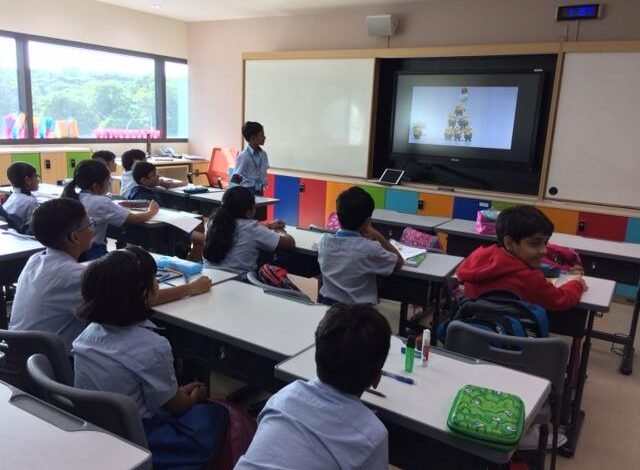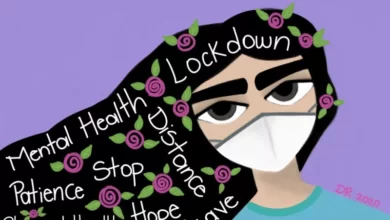The Future of Traditional Classroom Teaching

Traditional classroom teaching has been the primary mode of instruction for centuries, but with the advancements in technology, the future of classroom teaching is rapidly changing. In this article, we will explore the future of traditional classroom teaching, including the role of technology, teacher-student interactions, and the benefits of in-person learning.
Introduction
The introduction will provide an overview of traditional classroom teaching and the reasons why it is essential to discuss its future. We will discuss the advantages and disadvantages of traditional classroom teaching and how technology has influenced this method of instruction.
The Role of Technology in the Future of Traditional Classroom Teaching
In this section, we will discuss the impact of technology on traditional classroom teaching. We will analyze the benefits and drawbacks of incorporating technology into classroom instruction, including the role of online learning platforms, virtual reality, and artificial intelligence.
Online Learning Platforms
Online learning platforms have become increasingly popular in recent years, and their role in traditional classroom teaching is rapidly expanding. We will discuss the benefits of these platforms, including flexibility, accessibility, and cost-effectiveness, as well as the drawbacks, such as the lack of face-to-face interaction.
Virtual Reality
Virtual reality has the potential to revolutionize traditional classroom teaching by providing immersive experiences for students. We will discuss the benefits of using virtual reality in the classroom, including increased engagement and interactivity, as well as the challenges, such as cost and accessibility.
Artificial Intelligence
Artificial intelligence has the potential to personalize learning experiences for students, providing customized instruction based on their individual needs. We will discuss the benefits and challenges of incorporating artificial intelligence into traditional classroom teaching, including concerns about privacy and data security.
Teacher-Student Interactions in the Future of Traditional Classroom Teaching
In this section, we will explore the importance of teacher-student interactions in traditional classroom teaching and how technology can enhance these interactions. We will discuss the role of collaborative learning, student engagement, and feedback in traditional classroom teaching.
Collaborative Learning
Collaborative learning is an essential aspect of traditional classroom teaching, and technology can enhance this method of instruction. We will discuss the benefits of collaborative learning, including increased student engagement and improved problem-solving skills, as well as the challenges, such as the potential for unequal participation.
Student Engagement
Student engagement is critical in traditional classroom teaching, and technology can provide new ways to engage students. We will discuss the benefits of using technology to increase student engagement, such as the use of gamification and interactive learning tools, as well as the challenges, such as the potential for distractions.
Feedback
Feedback is an essential aspect of traditional classroom teaching, and technology can provide new ways to provide feedback to students. We will discuss the benefits of using technology to provide feedback, such as the use of online quizzes and assessments, as well as the challenges, such as the potential for inaccuracies.
The Benefits of In-Person Learning
In this section, we will discuss the benefits of in-person learning and why it is still an essential aspect of traditional classroom teaching. We will explore the advantages of face-to-face interaction, the importance of socialization, and the benefits of a physical classroom environment.
Face-to-Face Interaction
Face-to-face interaction is a critical aspect of traditional classroom teaching, and it provides opportunities for students to ask questions and receive immediate feedback. We will discuss the benefits of face-to-face interaction, including increased engagement and improved communication skills.
Socialization
Socialization is an essential aspect of traditional classroom teaching, and it provides opportunities for students to interact with their peers and develop social skills. We will discuss the benefits of socialization, including improved self-esteem and reduced social isolation.
The Benefits of Traditional Classroom Teaching
Traditional classroom teaching has been the cornerstone of education for centuries, and for good reason. One of the biggest advantages of traditional classroom teaching is face-to-face interaction between students and teachers. This interaction fosters a deeper understanding of the subject matter, as teachers can clarify concepts and answer questions in real-time.
Another benefit of traditional classroom teaching is that it builds social skills and relationships. Students have the opportunity to meet and interact with other students from diverse backgrounds, helping them develop communication skills and empathy. In addition, traditional classroom teaching creates a collaborative learning environment, allowing students to work together on projects and assignments.
Immediate feedback and support are also hallmarks of traditional classroom teaching. Students can ask questions and receive immediate answers, allowing them to correct misunderstandings before they turn into larger issues. Teachers can also provide individual support to struggling students, helping them catch up with the rest of the class.
Finally, traditional classroom teaching provides a structured schedule and routine, which can be beneficial for students who need consistency and predictability. This helps students develop time management skills and creates a sense of stability and routine.
The Advantages of Technology in the Classroom
Technology has the potential to revolutionize the way we teach and learn. One of the main advantages of technology in the classroom is personalized learning. With the help of digital tools, teachers can tailor instruction to each student’s individual needs, abilities, and learning style. This can lead to better academic outcomes and increased engagement.
Technology also increases accessibility to education. Students who live in remote or underserved areas can access high-quality education through online courses and distance learning opportunities. Technology can also help level the playing field for students with disabilities, providing assistive technology and accommodations to support their learning.
Gamification and interactive learning are additional benefits of technology in the classroom. Digital tools can make learning fun and engaging, and can motivate students to learn by using game-like elements.
Real-time feedback is another advantage of technology in the classroom. With the help of digital tools, teachers can provide feedback to students in real-time, which can help students identify areas where they need to improve and stay motivated.
The Drawbacks of Traditional Classroom Teaching
While traditional classroom teaching has many benefits, it also has some drawbacks. One of the main drawbacks is limited flexibility. Traditional classrooms operate on a fixed schedule, which may not work for all students. Additionally, traditional classrooms may not provide the flexibility needed for students with outside commitments, such as work or extracurricular activities.
Limited accessibility is another drawback of traditional classroom teaching. Students who live in remote or underserved areas may not have access to high-quality education, as they may not have a school nearby or may not be able to afford transportation to school.
Classroom distractions are also a potential drawback of traditional classroom teaching. Students may be distracted by other students or by outside noise, which can impact their ability to learn.
Overcrowded classrooms can also be a problem in traditional classroom teaching. Teachers may struggle to provide individual attention to each student, leading to students falling behind or not receiving the support they need.
Finally, traditional classroom teaching may not be able to address individual needs. Each student learns at their own pace and has their own learning style, but traditional classrooms may not be able to accommodate these differences.
The Disadvantages of Technology in the Classroom
While technology has many benefits in the classroom, it also has some potential drawbacks. One of the main disadvantages is that technology can be distracting. Students may be tempted to use their devices for non-educational purposes, such as social media or gaming, which can impact their ability to learn.
Limited social interaction is another disadvantage of technology in the classroom. Online classes and distance learning opportunities may not provide the same opportunities for social interaction and relationship building as traditional classroom
teaching. This can impact students’ social development and communication skills.
Another potential disadvantage of technology in the classroom is the lack of accountability. Online courses and digital tools may not provide the same level of supervision and monitoring as traditional classrooms, which can make it easier for students to cheat or not take their education seriously.
Finally, technology in the classroom can create a digital divide between students who have access to technology and those who do not. This can exacerbate existing inequalities and lead to further disparities in education outcomes.
The Future of Traditional Classroom Teaching
As technology continues to advance, the future of traditional classroom teaching is uncertain. While traditional classroom teaching has many benefits, it is clear that technology has the potential to transform education in significant ways.
One possible future is a blended learning model, which combines the benefits of traditional classroom teaching with the advantages of technology. In this model, students attend class in-person but also have access to online resources and digital tools to enhance their learning experience. This could provide students with more flexibility, individualized learning, and accessibility.
Another potential future is the widespread adoption of online learning and distance education. This model has already seen significant growth in recent years, and the COVID-19 pandemic has accelerated its adoption. While online learning has many benefits, it also has some potential drawbacks, such as limited social interaction and accountability.
Ultimately, the future of traditional classroom teaching will depend on how technology continues to evolve and how educators and policymakers choose to integrate it into the classroom. It is likely that some form of traditional classroom teaching will always be a part of education, as it provides a unique and valuable learning experience that cannot be replicated through technology alone.



